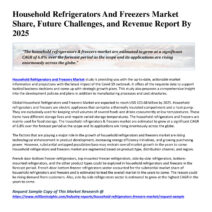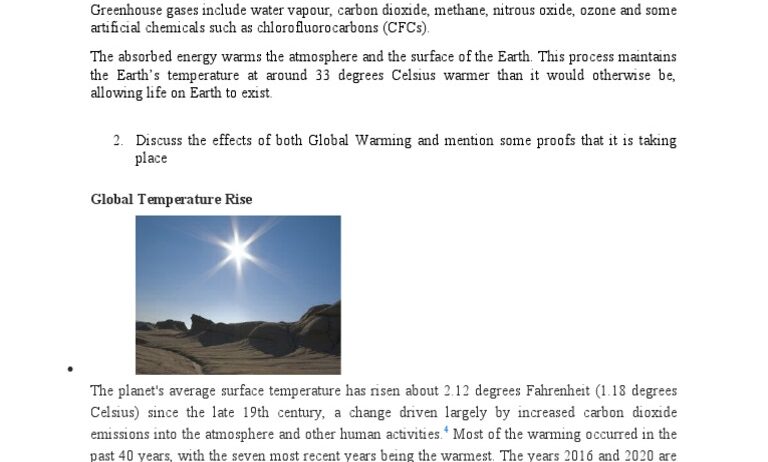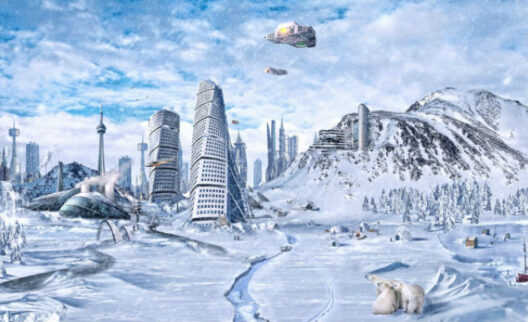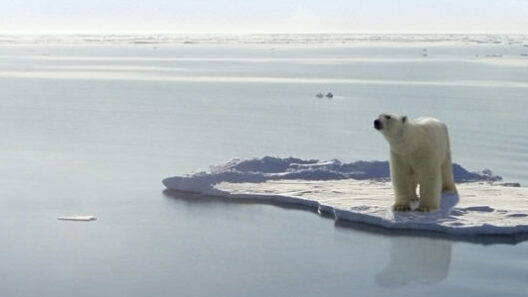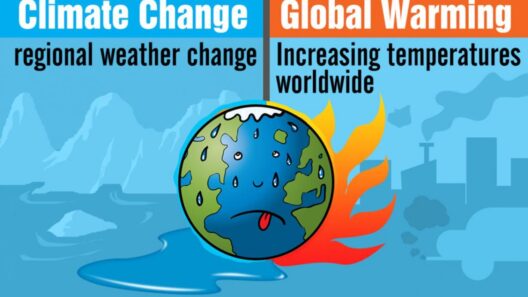In contemporary discourse on environmental issues, terms like “global warming” and “climate change” are frequently used interchangeably. However, a deeper inquiry reveals that these two concepts, while interconnected, represent distinct phenomena. To comprehensively understand their nuances is crucial in the quest for effective solutions to our planet’s ecological dilemmas.
At the heart of this discussion lies the fundamental observation that both global warming and climate change are results of anthropogenic influences. Such influences have captivated scholars, activists, and the general public alike, inciting a fascination that stems from the existential implications these phenomena carry. The bewildering complexity of Earth’s climate system further amplifies this intrigue.
Delving into the definitions, one can differentiate global warming from climate change based on their specific implications and scope. Global warming refers specifically to the long-term increase in Earth’s average surface temperature due to the accumulation of greenhouse gases (GHGs) in the atmosphere. The term predominantly encapsulates the thermodynamic shifts resulting from human activities, particularly the burning of fossil fuels, deforestation, and industrial processes.
Conversely, climate change encompasses a broader spectrum of alterations in weather patterns and climatic conditions over extended periods, often decades or centuries. While global warming is a significant contributor to climate change, the latter also includes variations in precipitation, shifts in seasons, and increases in extreme weather events. The distinction is crucial, as addressing global warming alone may not suffice in combating the myriad effects of climate change.
As society grapples with these complex issues, it becomes evident that the fascination with global warming and climate change transcends mere scientific interest. It is rooted in the profound implications these phenomena have on the future of humanity and the planet. The urgency to elucidate the differences between them fosters a deeper understanding, ultimately empowering individuals to make more informed decisions regarding personal and collective environmental actions.
Understanding the mechanisms driving these changes requires an exploration of the underlying science.
The Greenhouse Effect: The Catalyst of Global Warming
The greenhouse effect is a pivotal concept in understanding global warming. GHGs, such as carbon dioxide (CO2), methane (CH4), and nitrous oxide (N2O), absorb and re-radiate solar energy, effectively trapping heat within the Earth’s atmosphere. The increasing concentration of these gases, primarily due to human activities, is leading to an upward trajectory in global temperatures. Consequently, the ramifications are extensive, ranging from melting polar ice caps to rising sea levels, which threaten coastal communities worldwide.
Recent scientific studies have shown an alarming acceleration in the rate of warming. The Intergovernmental Panel on Climate Change (IPCC) has provided robust data quantifying this phenomenon, emphasizing the need for immediate and concerted action to mitigate its impacts. Understanding the mechanics of global warming enables individuals and policymakers to recognize the urgency required in addressing this critical issue.
Climate Change: A Broader Lens on Environmental Shifts
While global warming provides insights into temperature increases, climate change necessitates a broader examination of how these temperature shifts affect weather patterns and ecosystems. It entails changes in rainfall distribution, intensification of droughts, and an increase in climate-related disasters, such as hurricanes and floods. The multifactorial nature of climate change means that it is not only a temperature issue; it is equally about the intricate interactions within the hydrosphere, lithosphere, and biosphere.
Moreover, climate change has far-reaching implications for biodiversity. As habitats shift or disappear, species are forced to adapt, migrate, or face extinction. The intricate web of ecological relationships becomes strained, leading to unprecedented changes in ecosystems. The fascination here extends to the interplay between human dynamics and the natural world, urging society to rethink its approach to environmental stewardship.
The Social Dimension: Global Warming and Climate Change as Social Issues
Another critical aspect of understanding global warming and climate change is their socio-economic implications. The vulnerabilities of different communities, regions, and nations are not equal. Often, the most marginalized groups bear the brunt of climate-related adversities, exacerbating existing inequalities.
Access to resources and socio-political power strongly influence how different sectors of society respond to both global warming and climate change. This highlights the intersectionality of environmental issues with race, class, and global disparities. It compels individuals and organizations to consider climate justice—advocating for equitable solutions that recognize the differences in vulnerability and resilience.
As society navigates through this intricate landscape, it becomes imperative to foster dialogue that bridges the gap between scientific understanding and public awareness. Education plays a pivotal role, as understanding the distinctions between global warming and climate change is essential for mobilizing collective action and motivating informed decision-making.
A Call to Action: Bridging Knowledge and Responsibility
Clarifying the differences between global warming and climate change emerges not merely as an academic exercise, but as an urgent necessity in addressing the environmental crisis. With the recognition that these terms, while related, encapsulate distinct concepts, society is empowered to adopt a more nuanced perspective that informs policy, individual choices, and community initiatives.
In conclusion, as global citizens, a commitment to understanding and addressing these phenomena transcends the realm of scientific inquiry. It paves the way for a future where informed action is taken to mitigate the adverse effects of global warming and climate change. Collective responsibility and proactive engagement are pivotal in shaping a more sustainable planet. As individuals, organizations, and nations unite, there lies potential for meaningful change — a hopeful aspiration amidst the complexities of our shared environmental challenges.


